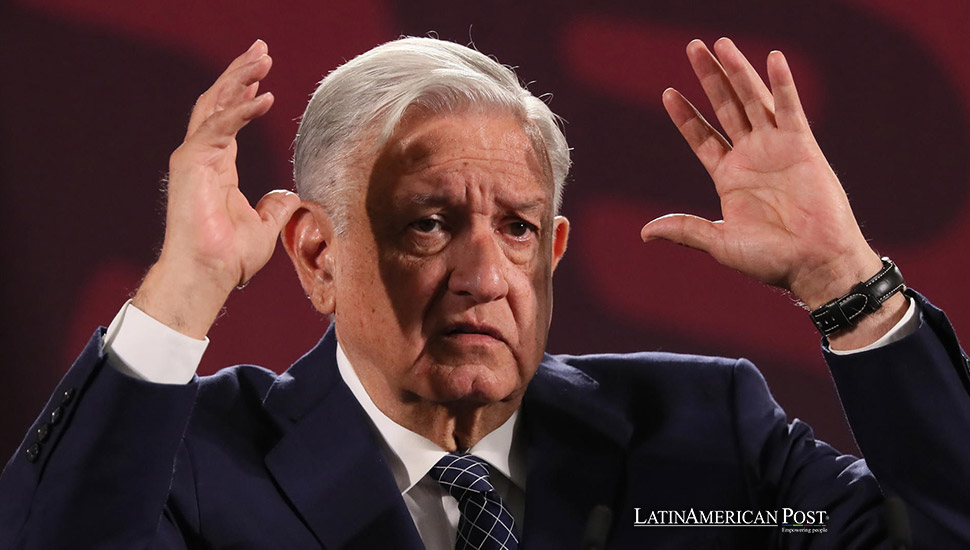Five Key Elements of Mexico’s Controversial Judicial Reform Proposal

Mexico’s proposed judicial reform, spearheaded by President Andrés Manuel López Obrador and President-elect Claudia Sheinbaum, has stirred national and international debate. With Senate approval, it moves closer to transforming the country’s legal landscape, triggering reactions from various sectors.
1. Popular Election of Judges
The most striking element of López Obrador’s judicial reform is the proposed popular election of judges. Under this new system, citizens would vote to elect not only members of the Supreme Court of Justice of the Nation (SCJN) but also judges from the Federal Electoral Tribunal (TEPFJ), the new Judicial Discipline Tribunal, district judges, and magistrates. This would impact a total of 1,688 judicial positions across the country.
The move is a radical departure from Mexico’s current practice of appointing judges through internal processes. It raises questions about judicial independence and how public sentiment might influence the integrity of the courts. Critics argue that the popular vote could make the judiciary more vulnerable to political pressures or populist sentiments, as candidates would need to campaign, possibly aligning themselves with certain political ideologies to secure votes.
The reform proposes that the first elections for Supreme Court justices and district judges would take place in 2025, with the remainder of judicial positions filled in 2027. Reform proponents claim it will democratize the justice system, ensuring greater transparency and public involvement. At the same time, critics fear it could politicize the judiciary and erode the rule of law.
2. Supreme Court Restructuring
Another critical aspect of the reform is a significant restructuring of the Supreme Court. Currently composed of 11 justices, the reform would reduce this number to nine. According to the reform’s advocates, the goal is to streamline decision-making processes and avoid potential deadlock situations that may arise in a larger court.
However, this proposal also involves shortening the term length of justices from 15 to 12 years and eliminating the Court’s current two-chamber system, which specializes in constitutional and administrative matters. Under the new structure, all cases would be heard by the entire Court in plenary sessions, consolidating decision-making power in a smaller group.
The reform also sets new eligibility criteria for aspiring Supreme Court justices. Candidates must be at least 35 years old, possess a law degree with at least 10 years of experience, and have no prior government positions the year before their election. These changes aim to ensure the Court’s independence, but the reform’s critics argue that reducing the Court’s size and its term limits could concentrate too much power on a few individuals.
Moreover, justices’ salaries would be limited under this reform, ensuring no one on the Court earns more than the president. The move addresses concerns about judicial salaries but has raised questions about its implications for attracting and retaining top legal talent in the Court.
3. New Judicial Discipline Tribunal
Replacing the existing Federal Judicial Council (CJF), the Judicial Discipline Tribunal is a newly proposed body overseeing judicial conduct. Its role is to investigate and sanction misconduct by judges, magistrates, and judicial personnel, offering a mechanism to address corruption and unethical behavior within the judiciary.
Unlike the CJF, which has seven members, the new Tribunal would have five. One would be selected by the executive branch, one by the Senate, and the remaining three by the Supreme Court. Each would serve a six-year term, ensuring a regular rotation of oversight.
This aspect of the reform has generated concern among legal experts and civil society groups. They argue that the involvement of the executive and legislative branches in selecting tribunal members could compromise the Tribunal’s independence. The question arises whether this reform would foster greater accountability within the judiciary or expose it to political influence.
Supporters of the reform believe that creating a new Tribunal could curb the perceived corruption and lack of transparency within Mexico’s legal system. Critics, however, worry that this body might be susceptible to political pressure, especially if its members are appointed through the political branches of government.
4. The Introduction of “Faceless Judges”
Perhaps one of the most controversial elements of the judicial reform is the introduction of so-called “faceless judges,” who would preside over cases related to organized crime, drug trafficking, and other high-stakes criminal matters. These judges would operate anonymously, protecting their identities to shield them from the threats and violence often associated with these cases.
The measure is modeled after similar reforms in countries like Brazil, Colombia, and El Salvador, where high levels of violence and criminal influence have necessitated additional protections for judges. In these cases, anonymity has been seen as a way to protect judicial independence and safety.
However, the concept of faceless judges has been met with significant opposition in Mexico. Legal experts argue that it undermines the principles of transparency and accountability, two cornerstones of any democratic legal system. Critics say that without public oversight, these judges could wield disproportionate power, leading to potential abuses of authority. Moreover, this lack of visibility could reduce public trust in the judicial system.
Despite the concerns, proponents insist that faceless judges are a necessary step to combat the rampant violence and intimidation that have compromised Mexico’s legal system. Given the country’s ongoing battle with organized crime, they argue that this measure is essential to ensure justice can be administered without fear of retribution.
5. Sheinbaum’s Backing and International Criticism
Initially, President-elect Claudia Sheinbaum was seen as potentially more moderate in her approach to judicial reform. Some observers believed she might seek to temper some of the more controversial elements of López Obrador’s proposal. However, in recent months, Sheinbaum has thrown her full support behind the president’s initiative, aligning herself with his vision for reshaping Mexico’s judiciary.
This backing has lent the reform additional political weight and intensified domestic and international criticism. The United States, one of Mexico’s key trade partners, has expressed concern about the potential impact on Mexico’s democratic institutions and economic stability. U.S. Ambassador Ken Salazar warned of risks to democracy and the economy if the reform is implemented. At the same time, credit rating agencies like Fitch have raised alarms over its possible effects on investor confidence and legal certainty.
One significant point of contention is the ongoing depreciation of the Mexican peso, which many attribute to uncertainty surrounding Sheinbaum’s electoral victory and judicial reform. The peso has fallen to levels not seen since 2022, with concerns mounting about how this reform might affect foreign investment and Mexico’s broader economic outlook.
Also read: Judicial Reform in Mexico: A Threat to Legal Certainty and the Division of Powers
As the reform continues to move through the legislative process, it remains a focal point of heated debate in Mexico. Supporters see it as a long-overdue step toward democratizing the judiciary and curbing corruption. At the same time, detractors view it as a potential threat to the country’s legal independence and economic stability. As Mexico grapples with these issues, the outcome of the judicial reform will undoubtedly shape the nation’s political and legal landscape for years to come.





